I started in at the beginning with Step 1, which deals primarily with the interior details for the engine and drive-train. The first little assembly deals with the final drive elements and is a 5 part assembly that then goes into the hull nose. The attachment of the circular parts, C3, is a little tricky as they fit loosely on the drive axle part C8 which is in turn capped by part C9. The alignment of all these parts is critical since the end portions of C8 and C9 mount into tabs in the hull nose, so I did a lot of dry fitting and testing before committing to glue. The hull nose itself had two very large remnant mold posts that I could only partially remove due to the tight space and curvature of the piece. Fortunately much of this will be hidden from view, but it was still a bit aggravating that they were there. That's the price I guess for the fine detail on the exterior in terms of cast pattern and the "Hotchkiss" detail.

Although it will be completely hidden from view on this model with no way to access it or show it, I went ahead and built the provided engine just to see how it would look. It's got good foundational detail, even going so far as to provide grooves on the pulley/fly wheels for the fan belts, but it's all going to be hidden away in the end.

The next little sub-assembly was the construction of the transmission, drive axle, and radiator. I left the radiator only dry-fit to insure a positive installation along with the rear firewall since that's a critical element in Step 2. The radiator had quite a bit of flash that needed to be carefully trimmed away. The Bronco plastic is soft, so it's very easy to cut too deeply if you're not careful.

To complete the step, the details for the driver's area were assembled and installed. There were three large raised ejector marks that needed to be dealt with to allow everything to fit level. These were easily removed with a #11 blade and some light sanding. The driver's seat bottom and top both had some flash that needed to be trimmed away and the driver's controls and foot pedals are just representations without any real detail to them. The steering controls had a prominent mold seam that needed to removed but otherwise everything fit where it was supposed to.

Step 2 essentially takes everything from Step 1 and installs it into the lower hull. The key element here is the installation of the rear firewall, part A19. You can see in the pic below that it's slightly warped where it dog legs in terms of how it aligns to the hull. This is something that I corrected after this pic with liquid glue and patient use of finger pressure. This is critical that it be aligned properly as it will serve as the base for a major component of the fighting compartment that covers the engine bay in a later step. Part C6, the door to the dog leg compartment, had to be sanded down about half a mm or so in order for it to fit where designed without bowing out the hull side at this point as well. I used a sanding board and carefully sanded it down, checking the fit multiple times, until I got it to the right width. There were two prominent raised ejector marks on the door that also needed to be removed with a #11 blade since this area will be exposed/visible on the finished fighting compartment.

Rounding out the step is the attachment of the hull nose. This fit snugly and required just a touch of liquid glue around the join areas to get a good fit. I lightly sanded the join area to remove the seam and let it dry before adding the towing eyes. These are parts A6 and they are designed to have their tabs fit into molded in slots on the front hull but either the tabs are too wide or the holes too narrow...and trying to fix either of them was more trouble than it was worth. I used sprue cutters to remove nearly all of the tabs, leaving just a small stub behind, and glued them directly into position. A small amount of putty was necessary even with this expedited method to fill minor gaps. The U-shaped towing hooks required some very careful removal from the sprues as they had very large attachment points that were almost fully integrated into the hooks themselves. These had to be carefully trimmed down and sanded to retain their shape, a very delicate operation considering the small size of the parts to begin with.

I also installed the same towing eyes, giving them the same treatment as the front ones, into the rear hull along with the conical covers parts A3...I'm not sure exactly what they are but I'm guessing they have something to do with the idlers. Anyhow, they had a bizarre method of attachment consisting of very small angled mount posts that were D-shaped and supposed to match up with similar holes in the rear hull. Those holes weren't completely formed on my hull tub, so I clipped them off and just glued the parts directly without bothering with the mount posts.

Next up will begin work on the suspension elements.



































































